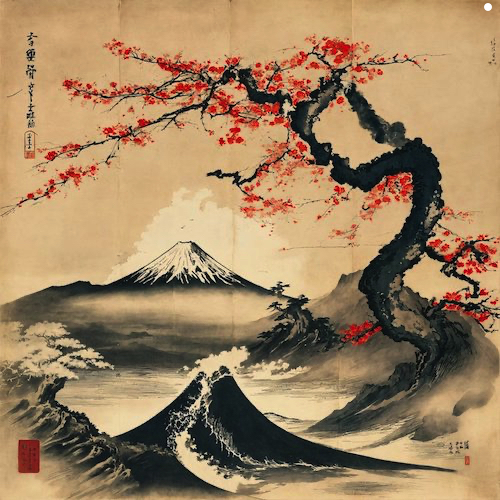The history of the creation of the state of Japan
The history of the creation of the state of Japan is a complex and multifaceted narrative that spans millennia. The origins of Japan as a unified political entity can be traced back to ancient times, shaped by a rich tapestry of cultural, social, and political developments. One of the earliest recorded periods in Japanese history is the Jomon period, which began around 14,000 BCE and lasted until approximately 300 BCE. During this era, Japan was inhabited by hunter-gatherer communities that developed unique pottery and early agricultural practices. The subsequent Yayoi period, starting around 300 BCE, saw the introduction of rice cultivation, metalworking, and the establishment of complex social structures. It was during this time that the foundations of Japanese society began to take shape, with the emergence of chiefdoms and early political entities. The Yamato period, also known as the Kofun period (250-538 CE), marked a significant shift towards centralization of power and the formation of a more cohesive state. The Yamato clan, based in present-day Nara Prefecture, gradually expanded its influence over neighboring regions, laying the groundwork for what would become the Yamato state. The 6th century witnessed the adoption of Buddhism from China and Korea, which played a crucial role in shaping Japanese culture and governance. The introduction of writing systems, including Chinese characters (kanji), further facilitated administrative and diplomatic activities within the burgeoning state. By the 7th century, the Yamato state had solidified its authority under the leadership of powerful rulers known as the Tenno (Emperors). The Taika Reforms in 645, inspired by Chinese models of centralized government, introduced significant administrative and legal changes aimed at strengthening imperial authority. The Nara period (710-794) saw the establishment of a permanent capital at Heijo-kyo (present-day Nara), along with the development of a sophisticated bureaucratic system and the compilation of Japan's first written chronicles, such as the Kojiki and Nihon Shoki. The subsequent Heian period (794-1185) witnessed a flourishing of aristocratic culture, literature, and the rise of the samurai class. Despite occasional challenges to central authority, such as the rise of powerful provincial families (the Fujiwara clan) and armed conflicts, the imperial institution remained a symbol of unity and continuity. The Kamakura period (1185-1333) ushered in a new era of feudalism, marked by the dominance of military clans and the establishment of the Kamakura shogunate. This period also saw the emergence of Zen Buddhism and the development of distinctive Japanese art forms, including tea ceremony, Noh theater, and ink painting. The Muromachi period (1336-1573) witnessed the rise of the Ashikaga shogunate and the spread of Zen aesthetics and culture. However, internal strife and regional conflicts, such as the Onin War, weakened central authority and contributed to a period of political fragmentation known as the Sengoku period (1467-1603). The unification of Japan was ultimately achieved by the military genius and political acumen of Oda Nobunaga, Toyotomi Hideyoshi, and Tokugawa Ieyasu during the Azuchi-Momoyama period (1568-1603) and the subsequent Edo period (1603-1868). The Tokugawa shogunate, established by Ieyasu, ushered in an era of relative peace and stability known as the Pax Tokugawa. In 1868, the Meiji Restoration marked a pivotal moment in Japanese history, as the imperial authority was restored, and Japan embarked on a path of rapid modernization and industrialization. The creation of a modern nation-state, with a centralized government, constitution, and modern institutions, transformed Japan into a major regional and global power by the late 19th and early 20th centuries. Today, Japan stands as a vibrant and dynamic nation, renowned for its technological innovations, cultural heritage, and economic prowess, rooted in a rich history that spans thousands of years. © frantlydom.com, 2024.
